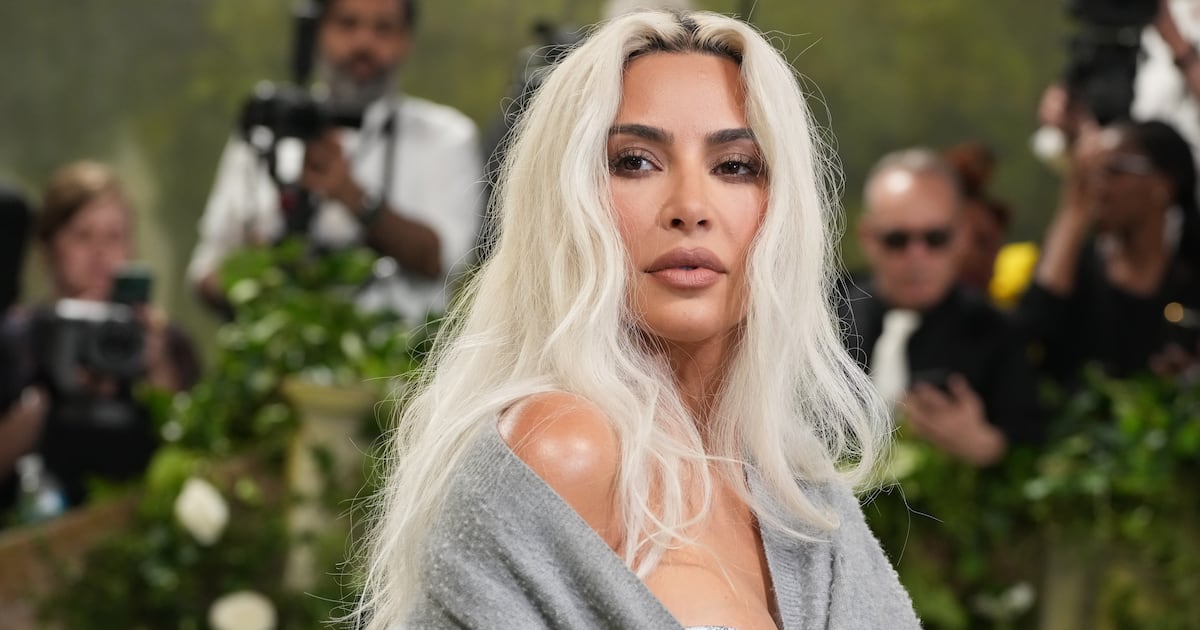There are more than 1,000 episodes of the wildly popular Japanese anime series One Piece. I, however, have never seen a single one. Sure, over the years I’ve seen glimpses of the show’s lead character, a pirate boy named Monkey D. Luffy, in his iconic straw hat. But it never struck me to peer further, to take the plunge and figure out exactly what this show was all about. After all, watching 1,000 episodes and counting is incomprehensibly daunting. It’s far easier to say, “Look at that guy in his funny little hat!” and be on your merry way.
But like all immensely popular international media, it was only a matter of time before it was Americanized and spat out into a live-action remake on some streaming service. This time around, that streamer would be Netflix, which is home to the highly anticipated eight-episode first season of One Piece, premiering Aug. 31. Given the platform’s abysmal history with live-action anime adaptations—not to mention the massive fanbase and lore that One Piece has generated so far over its 24-year run—it would be easy to brush off Netflix’s take as a low-quality imitation, one that’s as money-hungry as its bands of vicious pirates.
It turns out that judging Netflix’s One Piece based on its past mistakes would be as much of a mistake as judging a pirate based on the title of his chosen occupation (something Luffy himself often suggests in the show). The series is a sprawling, elegant work, one that carefully crafts its world and characters so as to ease newcomers into the One Piece lore, while never losing the spirit of its original anime artform. Each episode is packed—sometimes too fully—with adventure and an invigorating amount of relatively graphic violence and horror. Though its writing sometimes struggles to find a steady middle ground between the tweenage and adult demographics it’s trying to appeal to, One Piece consistently surprises thanks to its massive scope that suggests there’s danger around every corner.
With so much content to mine for a first season that is only eight episodes long, it’s a shock that One Piece is able to get right into the action without mucking around too much in needless exposition. Character backstories arrive when necessary and don’t overstay their welcome, often interspersed with action sequences to heighten the tension and emotional pathos— although to varying success when it comes to the latter. We’re introduced to Monkey D. Luffy (Iñaki Godoy), a fearless young seafarer who set out to become a pirate after a childhood spent around their kind. Luffy’s youth was spent overhearing whispers about the One Piece, a legendary treasure hidden by Pirate King Gol D. Roger, and Luffy has vowed to be the one to find it.
There’s just one problem…alright, hundreds of problems: the pirates who are also going after the One Piece and will stop at nothing to get it. But it’s not only pirates, either. The world’s naval officers, the Marines (who seem to function like an all-encompassing military force in this universe), are keen on finding it too, so as to apprehend and imprison the most nefarious of swashbucklers who get near it. Throw in some brutal bounty hunters looking to make a cool million off a pirate’s severed head, and Luffy’s got his work cut out for him.

Remarkably, One Piece never makes any of this feel very confusing at all. The series has some of the best fantasy world-building that I’ve seen in some time. Too many adaptations with such an ambitious storytelling rely on their viewers having some sort of prior knowledge of its source material, but One Piece gently guides viewers by the hand, without making them feel like they’re on the kiddie rides. Godoy’s earnest performance as Luffy helps quite a bit on that front, with the actor filling the frame with his brimming, anime-like smile and tangible zest for adventure. With Godoy’s effervescence—which, make no mistake, is gloriously hammy to its core—steering the ship, One Piece rides the waves of its sometimes shaky writing, instead of capsizing.
When the series tones down the peril to get more character-focused, our introduction to Luffy’s growing pirate crew—with members like bounty hunter Roronoa Zoro (Mackyenu) and the navigator Nami (Emily Rudd)—is done seamlessly in the series premiere, serving to amp up the stakes. But when fellow aspiring pirate Usopp (Jacob Romero) joins their gang toward the middle of the season, One Piece loses itself in a Series of Unfortunate Events-like trippy side plot that takes two protracted episodes to muddle through. A show as enormous as this one need not focus too much on the minute details, lest it lose the steady pacing it has so carefully built.
But the series is adept at dusting itself off after a stumble, typically doing so with electrifying fight scenes. Zoro’s trademark of using three different swords during combat never gets old or too hard to follow, thanks to his fight scenes being shot and edited so that viewers can actually see the moves, instead of masquerading what are likely stand-ins or computer effects through choppy editing. Though they lack much stylistic flair, the fights are well-choreographed and among the series’ strongest recurring elements—especially when viewers learn about the tricks that the seemingly naive Luffy has up his sleeve.
As a child, Luffy unknowingly ate a Devil Fruit, a mystical food that gives whoever consumes it a singular special power. Luffy’s Gum Gum fruit turned his skin into rubber, letting him stretch his limbs far and wide—an ability that comes in handy when he needs to clobber an enemy from afar. But the seas are home to the world’s most reckless, and thus, Luffy is not the only pirate to bear Devil Fruit powers. One Piece constantly pits Luffy and his crew against a collection of fascinating, unpredictable enemies on their quest for treasure.
One Piece works best when it leans into the freakish horror of those pirate enemies, like the genuinely creepy battles with a clown who can split his body into parts or a vampiric butler with Wolverine-style knives for knuckles. Though Godoy, Rudd, and Mackyenu all have stellar chemistry, the frenetic energy of the show falters when it becomes too contracted, spending more time on friendship than fighting. Luckily, these moments are sparse, and the show maintains its high-stakes atmosphere for most of its eight episodes, without abandoning the energy of its animated origins. The adaptation ably transmutes the tentpoles of an action-comedy anime to a live-action series. One Piece is fast-paced, clever, packed with slapstick humor, and boasts plenty of unique character designs that manage not to look goofy despite mimicking a cartoon.

The show does what all good adaptations should be able to do: make itself captivating even to viewers who know nothing about the source material. While it’s unclear how Netflix plans to move forward with a series this colossal when the original anime has been airing for 24 years without anyone getting ahold of the Gol D. Rogers’ treasure, there’s plenty of room to take these robust characters to new places. The seas are vast, and should Netflix choose to, there will always be more secrets, foes, and fortune to hunt.






